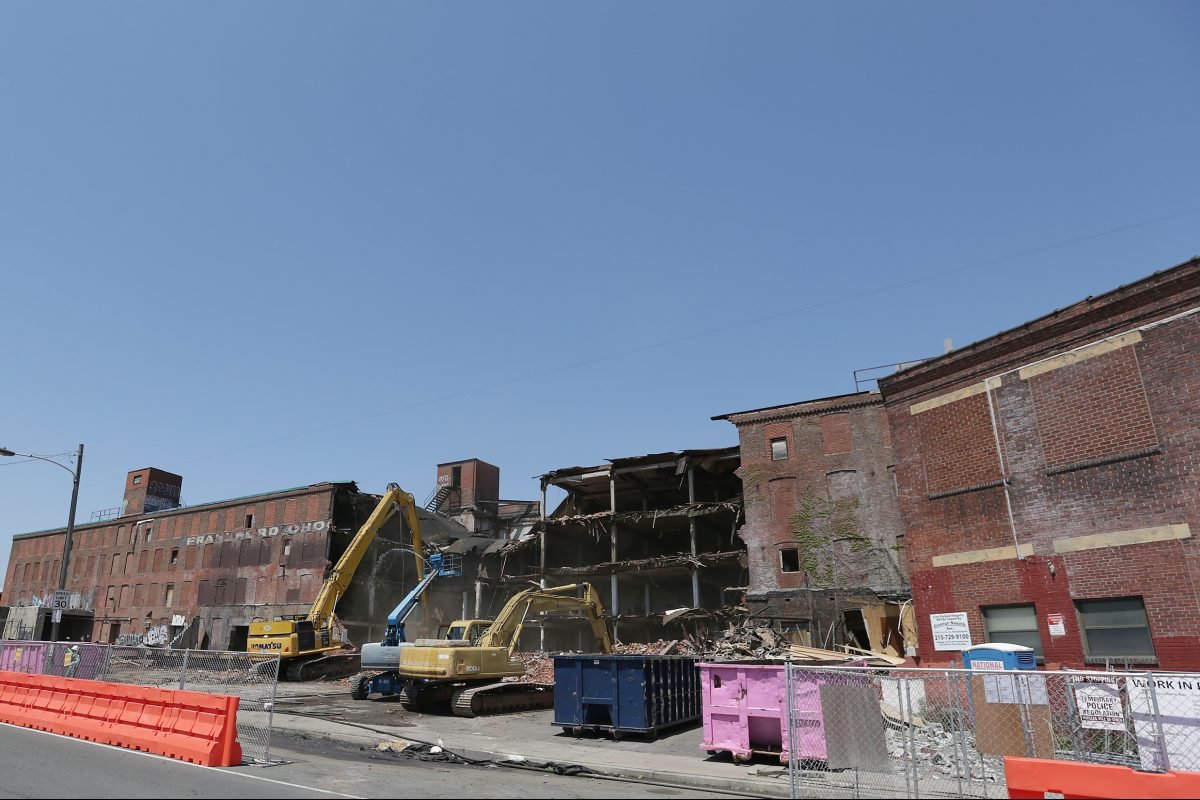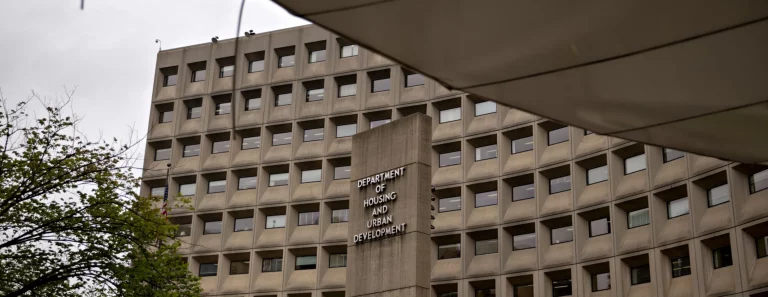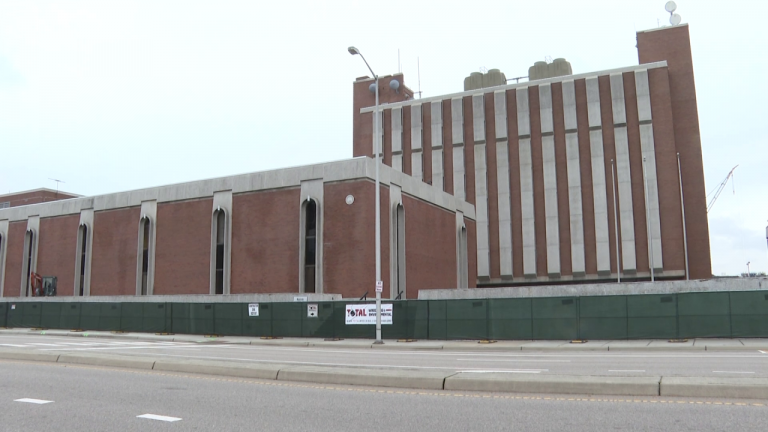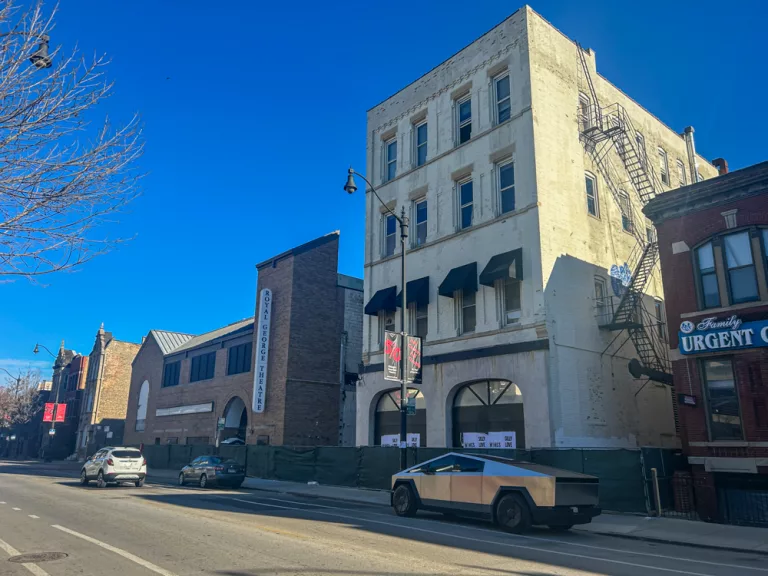
Among a certain set of Philadelphia urbanists who devour websites like Hidden City, Naked City, and Property, the work of GroJLart has long been required reading. His funny and profane tirades on architecture originally appeared on his blog, PhilaPhilia, where he assailed surface parking lots with an arsenal of F-bombs, S-bombs, and other assorted bombs while celebrating old buildings with an equally salty spray of adjectives. Even after the self-described “foul-mouthed blogger” migrated to mainstream publications and toned down his language, only a handful of people knew his actual name. For the record, it is Dennis Carlisle. It is now clear that journalism and public discourse in Philadelphia would have been better served if he had been transparent about his identity and his forays into real estate. Since taking a job in January with developer Ori Feibush, Carlisle has worked behind the scenes to facilitate the demolition of the Frankford Chocolate & Candy building, the last intact Civil War-era factory on Washington Avenue. All the while, his pseudonymous column, the Shadow Knows, has continued to appear on Hidden City, a respected website founded to promote historic preservation. Carlisle’s identity (and his move to the dark side) became public in March, when he appeared before the Historical Commission with an unusual request: He wanted to withdraw the nomination he had just filed to list the chocolate factory on the city’s Historic Register, which would have saved it from demolition. Several people in the audience recognized him as GroJLart because he had given tours for Hidden City. Carlisle, who had worked as a schoolteacher until June, used his real name when he filed the nomination Dec. 12. Even though he had been championing “old-ass buildings” in his columns for nearly a decade, it was the first time he had proposed one for designation. Two weeks later, Feibush offered Carlisle a job as “director of acquisitions and research.”
Once Carlisle was in his new position, he told me in an interview, Feibush convinced him that the factory was beyond salvage. Based on this new information, Carlisle said, he sought to withdraw the nomination to avoid prolonging “a bad situation.”
Camera icon Chris Stock Whether or not you accept this explanation, Carlisle’s involvement with Feibush — and several other developers, it turns out — casts his journalism in a new and troubling light. Was he really an ardent preservationist crusading on behalf of Philadelphia’s historic patrimony? Or did he use his anonymous columns in Hidden City, Property, and City Paper to advance other agendas? Did he hold back on attacking certain projects because they involved his clients?
Though Carlisle was not the only Hidden City contributor who had an outside job, he was the only one to write under a pen name. Every other Hidden City contributor, whether it was a grad student or a practicing architect, has been identified as such. Like all human beings, they have biases, but readers can easily figure out what they are and evaluate their credibility. According to a written statement provided by Hidden City co-editor Nathaniel Popkin, the website had no knowledge that Carlisle was moonlighting for developers. It has now canceled his column. When Carlisle started PhilaPhilia in 2009, citizen-run blogs promised to give legacy media outlets like my newspapers, the Inquirer and Daily News, a kick in the pants — a useful one, in my view. Freed from the albatross of tradition, they promised to dig into overlooked corners of the world and provide a fresh perspective to readers. Hence Carlisle’s liberal use of profanity. It was his way of rejecting the status quo.
Developer Ori Feibush has promised to save the smokestack and a small portion of the former chocolate factory.
One of things about the fuddy-duddy legacy media is that most still enforce old-fashioned ethical standards. My colleagues and I are strictly prohibited from working for the people we cover or benefiting from our professional relationships. As one editor at the New York Times is said to have told a reporter, “I don’t care if you sleep with elephants, so long as you don’t cover the circus.”
But the lines between journalism, government, activism, and business have been blurring in recent years. It is increasingly difficult for typical readers to vet stories they read on Facebook or the emails that flood their inboxes from various organizations. On the Fox Network, which can be considered a legacy outlet, commentator Sean Hannity has frequently featured lawyer Michael Cohen without revealing their personal relationship. Fox’s defense is that Hannity isn’t a journalist.
That’s Carlisle’s argument, too. “I never really held myself up to those standards,” he told me. That statement, however, is strikingly at odds with an interview he did last year with the website Philly Curated. “GroJLart believes blogging and journalism have essentially merged,” the article stated.
At the time, Carlisle told me, he had already taken a full-time job with Kurfiss Sotheby’s International Realty and had helped broker the sale of the former Inquirer Building. Why did Carlisle keep those relationships secret from Hidden City? “I didn’t feel any obligation to tell them,” he said. “I was bound by confidentiality agreements, and I knew they would ask questions about the deals I was working on.” Of course they would. Despite its lapse with Carlisle, Popkin said Hidden City aspires to maintain the same journalistic standards as the legacy media. Yet, out of a desire to trade on his GroJLart brand, the website continued to let him write under a pen name. As David Mindich, the chair of Temple University’s journalism department, observed, “The problem with operating anonymously is that your life is not traceable.”
Liz Spikol, who was Carlisle’s editor in 2013 at Property, a Philadelphia Magazine website, told me she was stunned when she saw Carlisle’s name associated with Feibush, “I was completely shocked and really distressed.” So was Popkin, who wrote in his statement, “We have been betrayed by one of our longest standing writers.” More important, readers have been betrayed.
Carlisle is by no means directly responsible for the destruction of the chocolate factory, a handsome brick building at 21st Street that resonates with Philadelphia’s industrial history and that was listed on the National Register of Historic Places. Built in 1865 for one of the city’s most important wallpaper manufacturers, Howell & Bros. Paper Hangings, it ended up a century later as the home of a company that made Easter candy.
Developer Ori Feibush has hired JKRP architects to plan a mix of townhouses and apartments on the chocolate factory site. The property is currently zoned for industrial use and will require a zoning change.
It had been empty for at least a decade when Feibush paid top dollar, $15.5 million, for the block-size property. He told me he always envisioned the factory as a tear-down. When the Historical Commission refused to let Carlisle withdraw his nomination for designation, Feibush found a workaround: After obtaining two engineering reports stating the building was in bad condition, he was able to persuade the commission and the Department of Licenses and Inspections to grant him a demolition permit. He is now tearing it down and wants to build a mix of townhouses and apartments. However, the land is currently zoned for industry only, and Feibush has long been at war with the district councilperson, Kenyatta Johnson, who has veto power over its rezoning.
The fact that he hired Carlisle just as he was preparing to complete the purchase, Feibush said, was a coincidence. “I’ve known Dennis for many years. He’s phenomenal at research,” Feibush said. Still, Feibush admitted he rarely read Carlisle’s Hidden City columns — “except when my name was mentioned.”
Based on information from three people who recently toured the factory — L&I chief David Perri, Preservation Alliance director Paul Steinke, and architect Ben Weber — demolition was not the only option. The dangerous parts of the structure could have easily been stabilized, believes Weber, who has successfully saved old buildings in much worse shape. The factory might have been given a new life as apartments, similar to Oxford Mills in Fishtown, and many other Philadelphia industrial buildings.
I am sad to see Washington Avenue lose an important piece of its architectural heritage. But I am even sadder about the role a journalist played in its demise and the damage that these events will do to a profession that is crucial to preserving the architecture of our democracy.
by Inga Saffron, Architecture Critic @IngaSaffron | isaffron@phillynews.com




